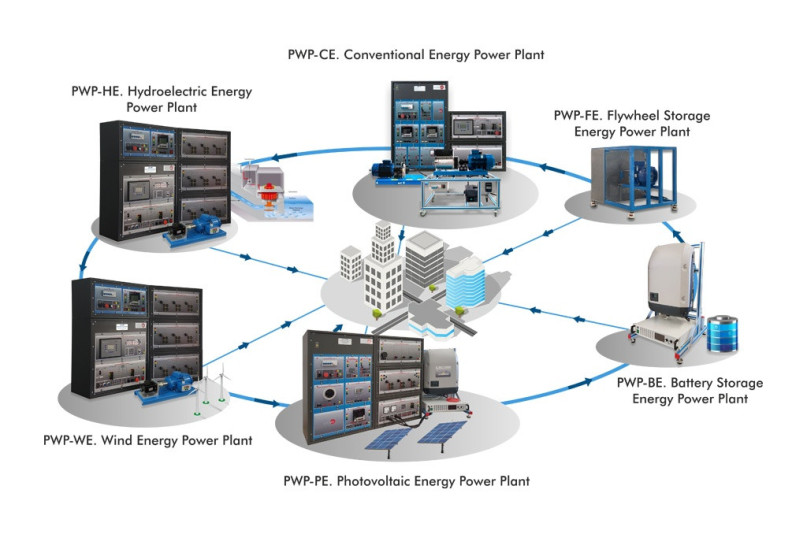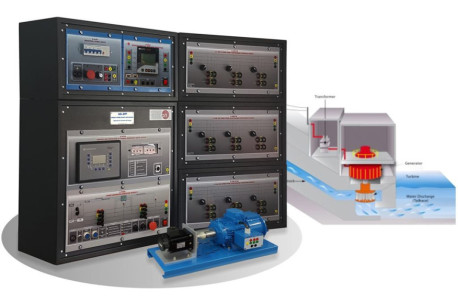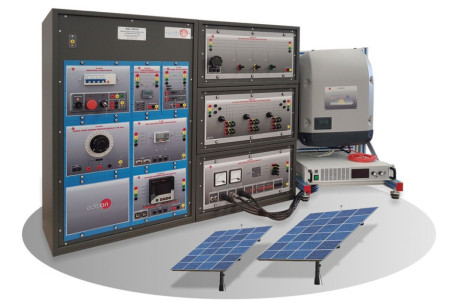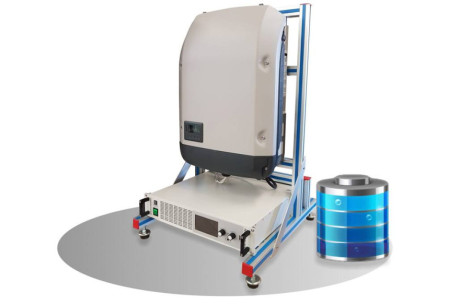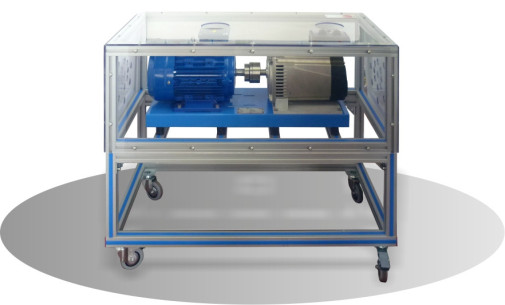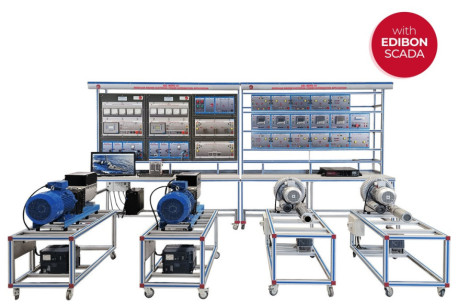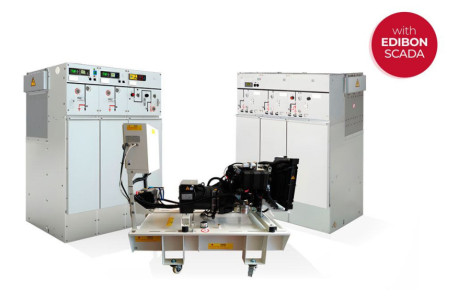The Microgrid Power System, "AEL-MGP", has been designed for the theoretical-practical training on microgrid power systems. This system allows studying the architecture, management and the main control maneuvers carried out in a hybrid context based on renewable energies. This is power system which stands for the set of renewable resources (photovoltaic, wind and hydroelectric) integrated into an isolated grid for power production. Moreover, the design of this system has been done with actual scaled industrial elements with the aim of gaining the maximum experience with the management of a microgrid.
The "AEL-MGP" Microgrid Power System is constituted by a set of applications recommended to study the different scenarios that can occur in a micro grid. Due to the diversity of micro grids Edibon recommends a set of applications with the purpose of the user selecting those based on the situations he wants to study.The recommended applications are as follows:
- PWP-CE. Conventional Energy Power Plant. This power plant is required to work with any other power plant offered in this catalog. Its purpose is, as in a real Micro Grid, to create the basis of the structure of the micro grid and determine the frequency and voltage parameters of the latter. The rest of the power plants will be synchronized to this thanks to the stability produced. In addition, this application acts as a base generation in the micro grid, providing constant power. As in real micro grids, this application represents diesel or gas power plants, normally used in islands or other systems based on micro grids. It is essential that this application is complemented with some of the renewable energy applications recommended in this catalog in order to create a complete micro grid.
- PWP-HE. Hydroelectric Power Plants The purpose of this application is the study of hydroelectric power plants in the context of micro grids. Hydroelectric power plants have a great capacity to supply energy at certain times of maximum demand due to their rapid response.
- PWP-WE. Wind Power Plants. The purpose of this application is the study of wind power plants in the context of micro grids. It consists of an induction turbinegenerator group whose purpose is to provide energy to the micro grid by making an intelligent energy distribution based on the decisions of the operator (user).
- PWP-PE. Phototvoltaic Power Plants. The purpose of this application is the study of photovoltaic power plants in the context of micro grids. It consists of a three-phase inverter fed with a photovoltaic panel array simulator.
- PWP-BE. Batteries Energy Storage Power Plant. The purpose of this application is to demonstrate the importance of energy storage in isolated environments. There are cases in which due to the absence of wind or photovoltaic energy we have no other option than to resort to the storage of chemical energy by means of batteries. This application consists of a bidirectional inverter whose purpose is to store energy in a battery, also included, and in moments when demand requires it to quickly supply said energy.
- PWP-FE. Flywheel Storage Power Plant. The purpose of this application is to demonstrate the importance of energy storage in isolated environments. In this case, it is a sophisticated application in charge of storing kinetic energy through a flywheel.
In addition, it is also offered the possibility to acquire a kit for the study of faults in microgrids, consisting of an advanced protection relay with configurable numerical programming which allows showing the features of feeder protection relays, one power switch module as interrupting device and a fault injection module for the injection of single-phase, two-phase or three-phase, to earth, faults.
It is also recommended to acquire the control and data acquisition software, EMG-SCADA (Energy Manager and Data Acquisition Software), which stands for the operation and control center of a microgrid (MGCC, Microgrid Control Center). From this software, the user will be able to plan the wind, photovoltaic and hydroelectrical resources
 クッキーの設定
クッキーの設定

